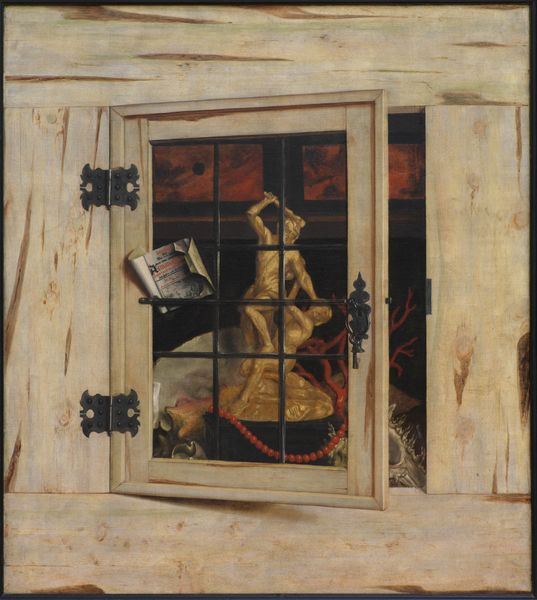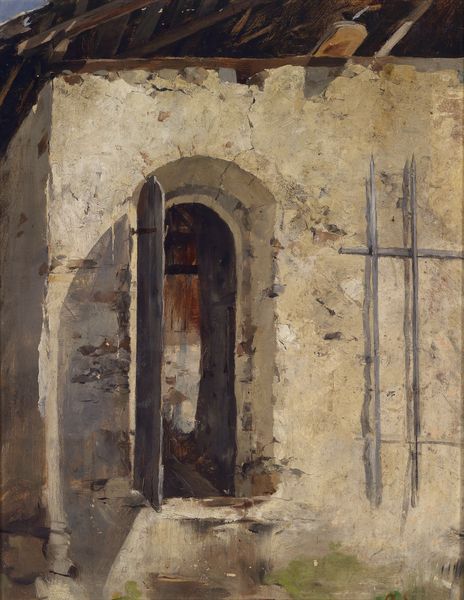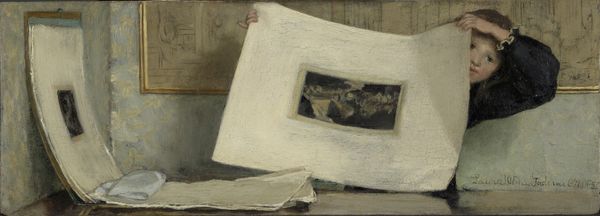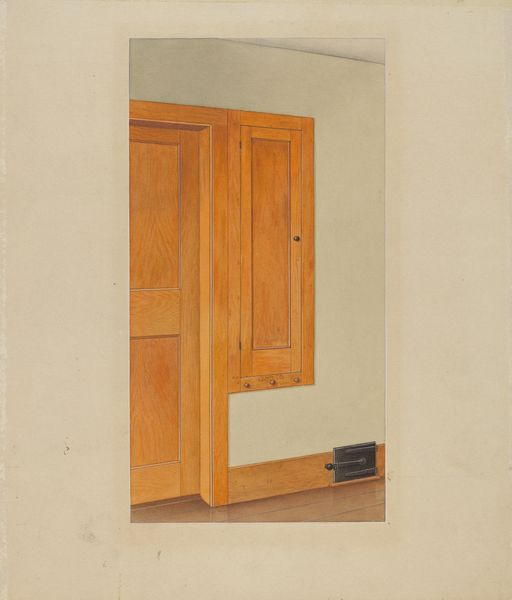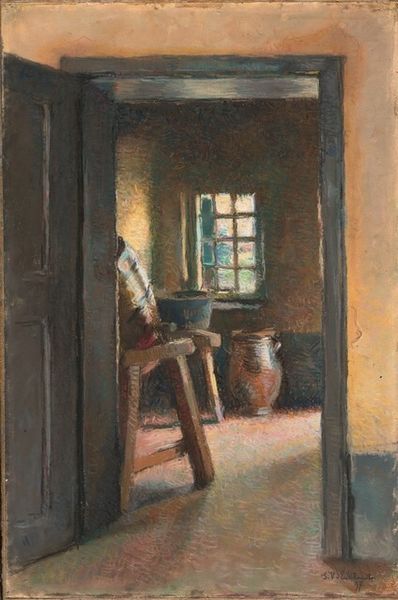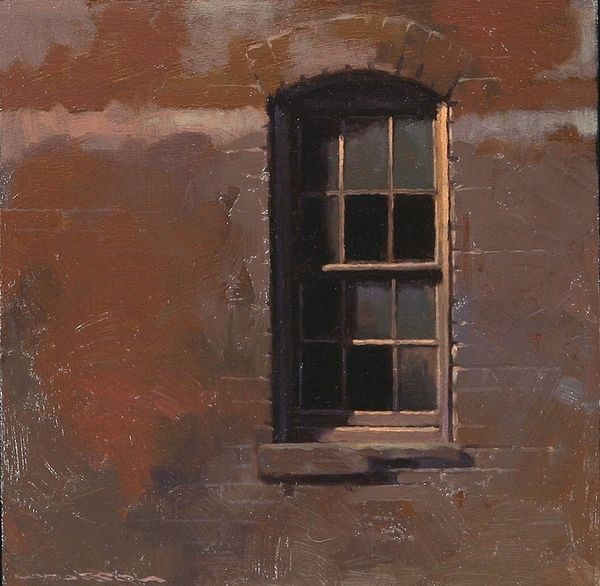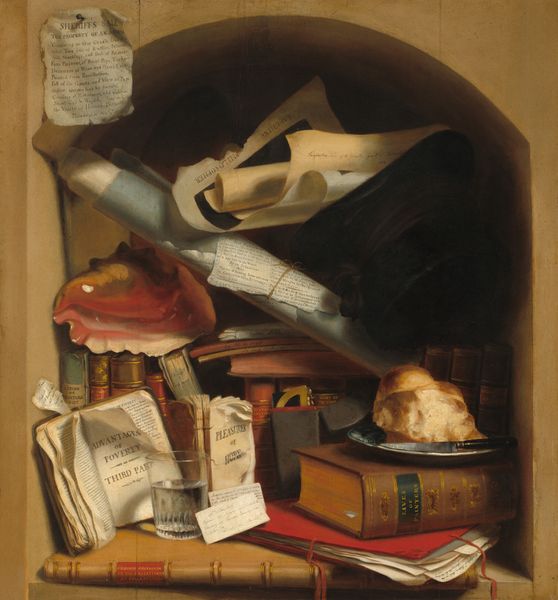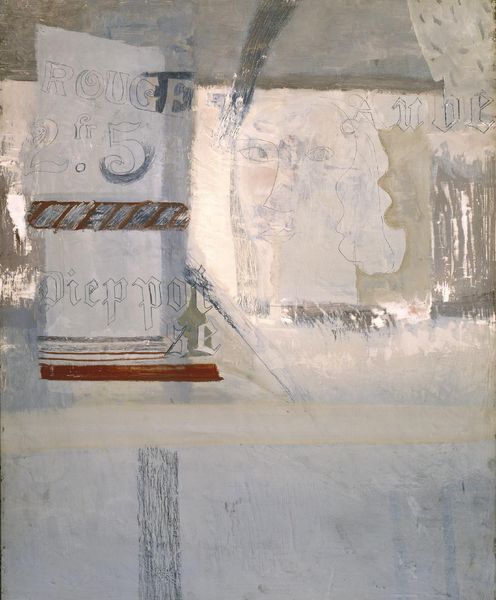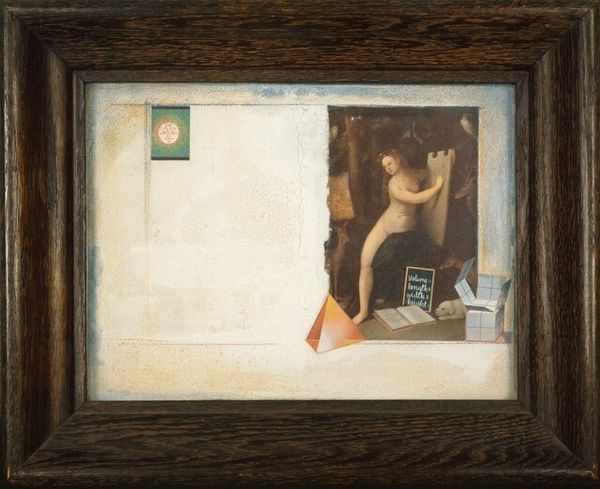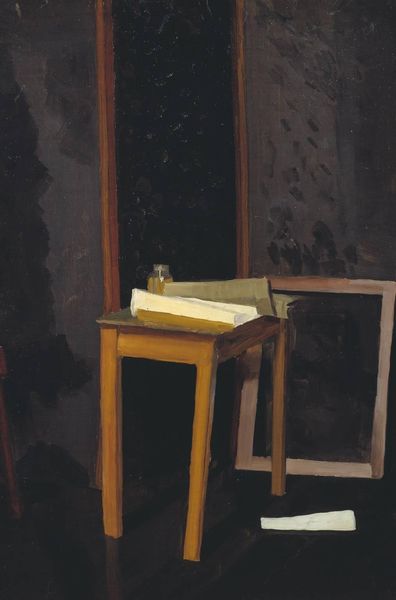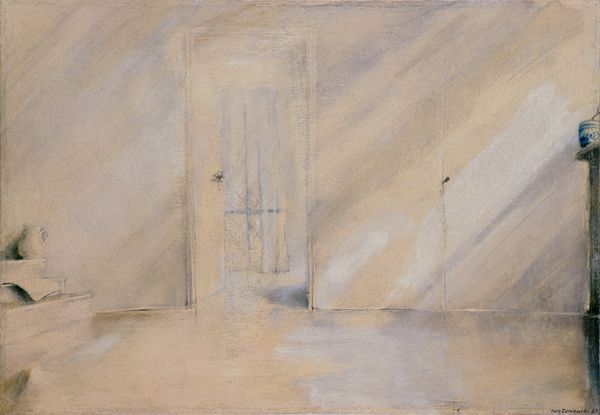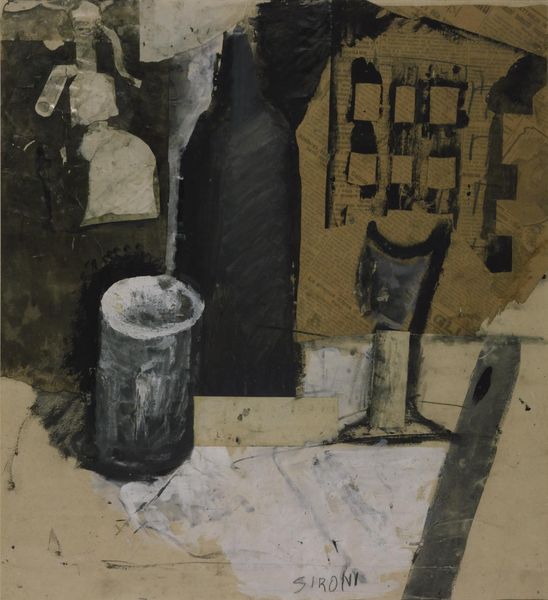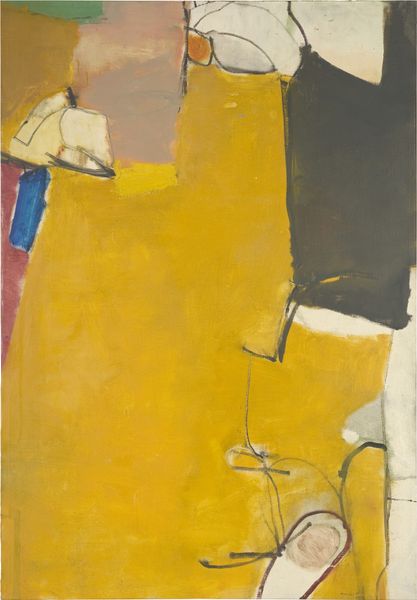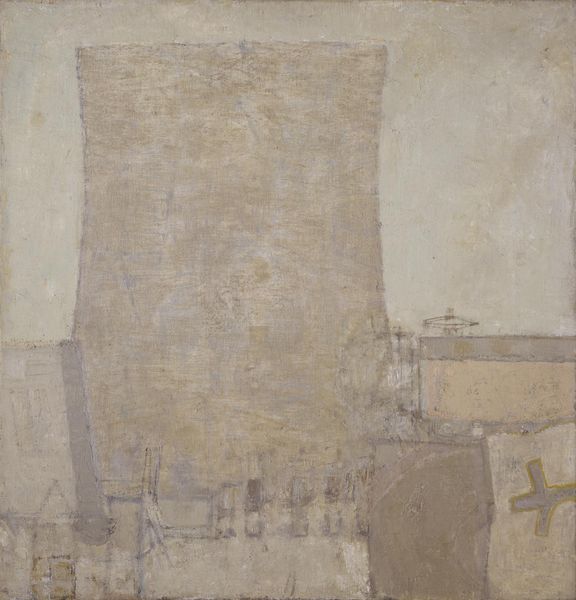
Trompe l'Oeil. A Cabinet of Curiosities with an Ivory Tankard 1670
0:00
0:00
oil-paint
#
baroque
#
oil-paint
#
perspective
#
oil painting
#
vanitas
#
history-painting
#
trompe-l'oeil
Dimensions: 99.5 cm (height) x 89.5 cm (width) (Netto), 102.5 cm (height) x 92.7 cm (width) x 6.3 cm (depth) (Brutto)
Curator: Looking at Cornelius Norbertus Gijsbrechts' oil painting from 1670, "Trompe l'Oeil. A Cabinet of Curiosities with an Ivory Tankard," one immediately appreciates the hyperrealistic illusion. What are your first impressions? Editor: There's a quietude about this piece. A slightly melancholic air. It’s intriguing how the mundane—papers, a quill—are elevated to this status through precise depiction. I wonder about the stories these fragments hint at. Curator: The 'trompe l'oeil,' or 'fool the eye,' aspect is central, achieved through meticulous application of oil paint, creating a deceptive sense of depth and texture. Gijsbrechts pushes the boundaries between the artwork and our perceived reality. The wooden panels framing the cabinet are also rendered in paint! Editor: Indeed. Consider the quill—a symbol of knowledge, power, perhaps even immortality through writing, contrasted with the fragility of paper. And that ivory tankard, likely a prized possession, alludes to status and taste, doesn't it? Each element functions as a symbolic artifact. Curator: From my perspective, this is a meditation on materials and craftsmanship, not only as demonstration, but the artifice is the meaning itself! Gijsbrechts presents the *act* of visual representation. I mean, notice the papers appear to cast actual shadows—a complete manipulation of depth through the density and layering of oil. Editor: Absolutely. This isn't just realism, but a heightened artifice to convey underlying messages about the fleeting nature of life, of earthly possessions, right? The objects represent both accomplishment and ephemerality. It's a fascinating display of symbolism rooted in the materials of everyday life. Curator: Examining Gijsbrechts' meticulous construction underscores this idea of value– a blurring of lines between common objects and high art through skillful application and presentation. It asks: What elevates an object to art? Editor: Precisely! And the artist achieves a multi-layered composition wherein a window showcases layers of implied symbolic meaning about society and our perception of reality. Curator: I find myself considering the contemporary appeal of simulated experiences, and how artists manipulate material representations of reality. Editor: And for me, the artwork reminds us of the continuous interplay between symbolic value and our evolving perception across cultures and time.
Comments
statensmuseumforkunst almost 2 years ago
⋮
Upon cursory inspection this painting by Cornelius Gijsbrecht looks like its counterpart KMS3075. The difference is that the door can in fact be opened. This time our eyes are not deceived; unlike in other trompe l’oeil paintings by this Flemish artist. The cupboard in real life As you turned the key and opened the door you would look into a cupboard where the ivory vessel and gold equestrian statue would be on display in real life. The motif The back of the door shows the back of the glass pane with notes and letters inserted. The ivory vessel – and perhaps the statuette as well – was created by the German artist and ivory carver Joachim Henne. Like Gijsbrechts he worked extensively for the Danish court. The museum's holdings feature a similar equestrian statuette and statuettes carved by Henne and other artists from the period
Join the conversation
Join millions of artists and users on Artera today and experience the ultimate creative platform.
statensmuseumforkunst almost 2 years ago
⋮
This artwork is a cabinet door that can actually be opened. It was probably made to fit into a panel or wall of the Green Cabinet at Rosenborg Castle. The Green Cabinet contained Frederik III’s collection of valuable objects of art, like the ivory tankard that can be seen through the leaded window of the cabinet door. From the back only the window with inserted letters, newspaper announcements, a quill, and a penknife can be seen. The ivory tankard and other treasures that can be seen through the glass at the front are not painted on the back, because these objects were actually visible once the door was opened.
